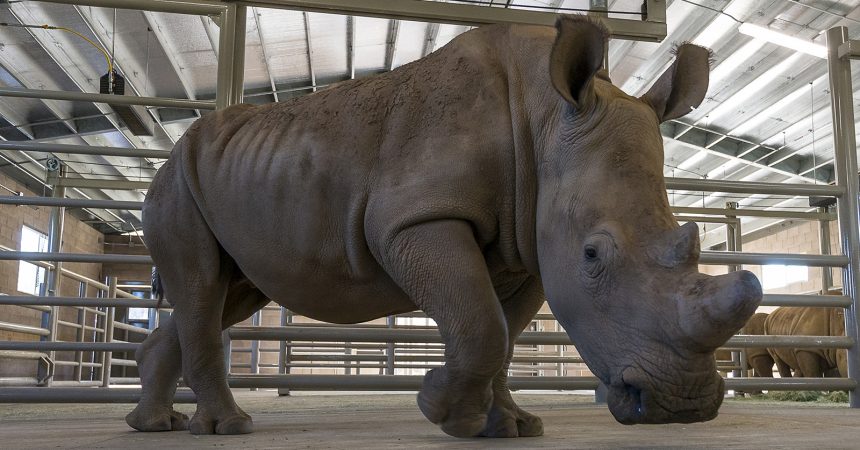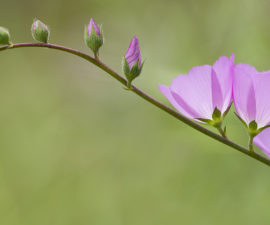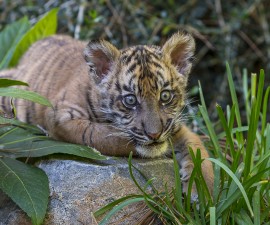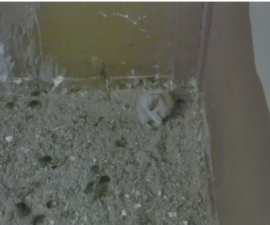Southern White Rhino May Have Been Target of Failed Poaching Attempt While in South Africa
The animal care team at the San Diego Zoo Safari Park used ultrasound and radiography to further examine Wallis, a female southern white rhino at the Nikita Kahn Rhino Rescue Center, this morning (Aug. 19, 2016). The exam was an additional attempt to determine the cause of a wound on the animal’s left side that has been slow to heal.
The 5-year-old rhino was moved from a private reserve in South Africa to the Safari Park in November 2015, and she had a small skin wound upon her arrival. Veterinarians have been treating the wound, and in April they performed a minor surgical procedure to explore and clean it. When this did not resolve the issue, a second procedure was performed in July that opened the affected area, revealing that the wound was more extensive than it first appeared. There has been speculation that the wound was originally caused by a penetrating foreign object. Earlier this week, a metal detector provided a strong signal indicating a brass or lead object—possibly a bullet or bullet fragment—under the current wound site.
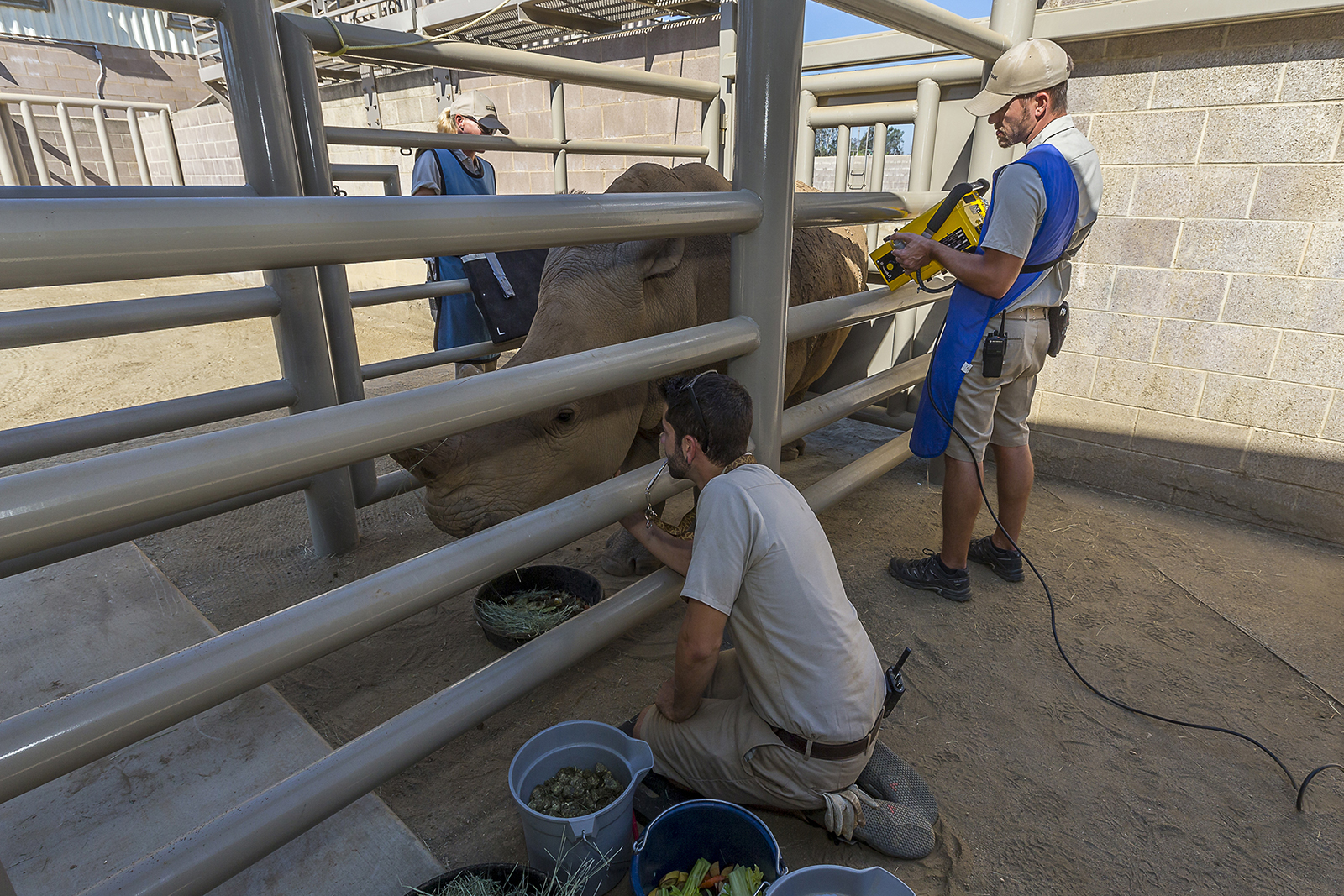
“Today’s radiograph and ultrasound was conducted on Wallis with the hope of detecting any foreign object that may be the cause of her existing wound,” stated Jim Oosterhuis, DVM, San Diego Zoo Safari Park. “We will await the results of the ultrasound; but unfortunately, the radiograph was not successful in detecting anything, due to the sheer size of Wallis. Her skin is over an inch thick, and she’s about two-and-a-half feet wide—and we can’t get deep enough to obtain the image we need. Our next step is to seek assistance from the San Diego Fire-Rescue Department, which has offered us the use of specialized imaging equipment utilized by their bomb squad,” Ooesterhuis added. “We will schedule that exam in the near future.”
The animal care team wants to pursue all noninvasive diagnostic techniques available, to give them a better understanding of this chronic wound and the best treatment approach. The wound does not appear to have an adverse affect on Wallis’ overall health. She is eating well and shows no sign of decreased activity.
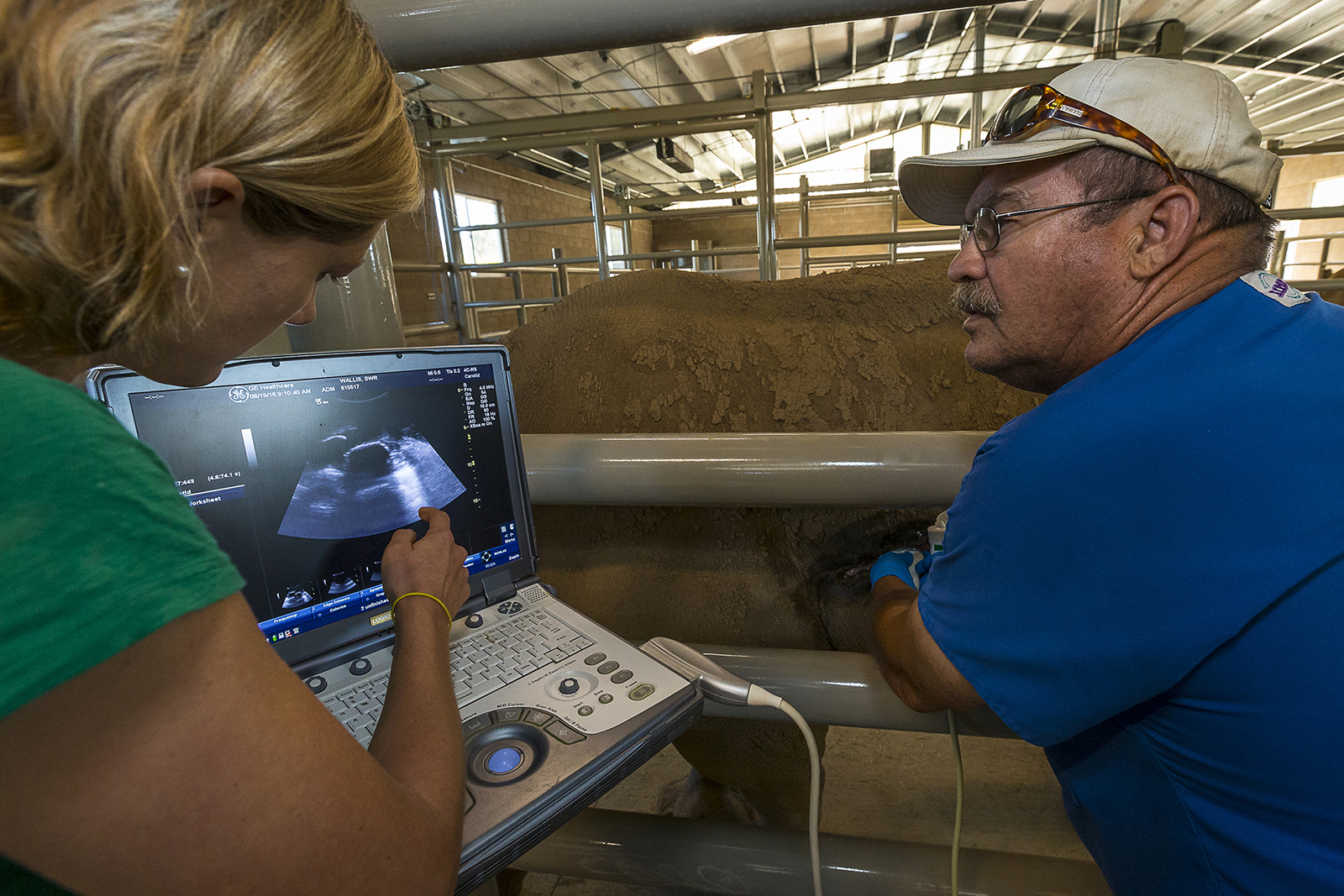
Wallis is one of six female rhinos that were relocated to the Safari Park from private reserves in South Africa, as part of a collaborative conservation effort to save the critically endangered northern white rhino—and all rhino species—from extinction. Keepers at the Nikita Kahn Rhino Rescue Center have been working with Wallis and the other rhinos to build relationships and train them, through positive reinforcement, to receive any needed medical procedures, as they could potentially serve as future surrogate mothers for a northern white rhino. This training has allowed the veterinarians to be able to interact with and treat Wallis on a daily basis.
Speculation is that Wallis may have been the target of a failed poaching attempt while in South Africa, where shooting and killing rhinos for their horns has dramatically affected rhino populations in the wild and in private reserves. Rhinos are poached for their horn, which is made of keratin—the same material that forms human fingernails. Rhino horn has been erroneously thought to have medicinal value and is used in traditional remedies in some Asian cultures. In addition, objects made of rhino horn have more recently become a “status symbol,” purchased to display someone’s success and wealth, because the rhino is now so rare and endangered.
San Diego Zoo Global has been working for decades, along with other accredited zoos, to keep a sustainable population of rhinos safe under human care while working to protect them in sanctuaries in the wild. The Nikita Kahn Rhino Rescue Center furthers this commitment and helps in establishing the Safari Park as a sanctuary to protect rhinos—at a time when an average of three rhinos are killed each day in the wild by poachers.

